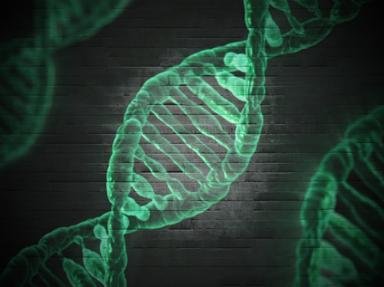Quiz Answer Key and Fun Facts
1. DNA first came to the attention of scientists when, in 1869, Johann Friedrich Miescher found a substance which was not protein in the pus cells he was examining. Miescher came to the conclusion that "nuclein" (as he called it) was not a protein by using pepsin. What is pepsin?
2. Following on from Frederick Griffith's work in 1928, Avery, MacLeod and McCarty claimed that their experiments showed that DNA could be taken up and expressed by bacteria. What is this process called?
3. The confirmation that DNA was the hereditary material came from the 1952 experiments carried out by Alfred Hershey and Martha Chase. They did this by labelling DNA with a certain isotope and then checking to see if the isotope (and therefore the DNA) had been taken up by the bacteria. Which element's isotope, found in the "backbone" of DNA, was used?
4. With the revelation that DNA was the hereditary material, Erwin Chargaff was puzzled by the fact that DNA was made of only four "letters", or nucleotides. Chargaff also discovered that the number of purines in a molecule of DNA was always equal to the number of pyrimidines. Which of the following is NOT true of purines and pyrimidines?
5. Just as Chargaff set down the rules for base pairing, Salvador Luria and Max Delbruck characterised the phenomenon of mutation. Their "fluctuation test" aimed to determine whether mutations arose spontaneously or in response to a selective force. What was their conclusion?
6. The components of DNA were now known, but the structure remained elusive. The breakthrough came from two groups working in parallel in the UK - Watson and Crick at Cambridge and Wilkins and Franklin in King's, London. Which of the following best describes the structure of DNA?
7. The discovery of the structure of DNA was followed by a hive of activity in the study of this molecule. The next major step came in 1958, when Matthew Meselson and Franklin Stahl demonstrated that DNA replicated semi-conservatively. Which of the following best describes the term "semi-conservative replication"?
8. Experiments involving synthetic mRNA in the 1950s and carried out by Nirenberg and Khorana (amongst other) were employed to determine which nucleotides coded for which amino acid. What principle, first put forward by George Gamow, was essential to the understanding of the genetic code?
9. Frederick Sanger pushed forward the field of DNA sequencing, using clever techniques in the 1970s to determine nucleotide sequences of DNA molecules. Which of these was used by Sanger to achieve this?
10. Sanger's sequencing techniques were effective, but time consuming. Several "next generation" methods of sequencing were used from 1990 as part of an international effort to identify and map every gene found in the human genome. What name was given to this venture?
Source: Author
doublemm
This quiz was reviewed by FunTrivia editor
WesleyCrusher before going online.
Any errors found in FunTrivia content are routinely corrected through our feedback system.
